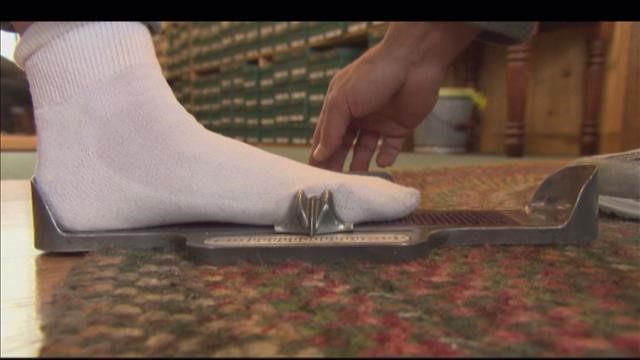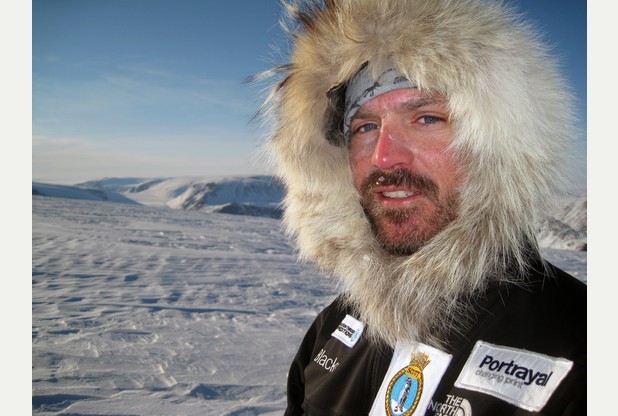Connect With Us
Items filtered by date: January 2014
Wearing the Wrong Shoes is the Culprit to Foot Deformities and Pain
 According to a study conducted by the Institute for Preventive Foot Health, more than half of us suffer from foot problems and often these problems are directly related to our shoes. Wearing the wrong shoes can lead to life-long deformities that require surgery to fix said Consumer Reports On Health.
According to a study conducted by the Institute for Preventive Foot Health, more than half of us suffer from foot problems and often these problems are directly related to our shoes. Wearing the wrong shoes can lead to life-long deformities that require surgery to fix said Consumer Reports On Health.
High heels can shorten your Achilles tendon, and can trigger plantar fasciitis; even flat shoes can harm the feet due to lack of support and cushioning according to Cami Marshall of WEMY News 2. Consumer Reports On Health suggests on opting for a lower heel to minimize pressure off the ball of your foot. Also it is important to make sure there is adequate space in the toes, and avoid shoes that have thin, little, or no support. Marshall states that the most common problem is simply wearing the wrong shoe size.
Spending time to find the right shoe, and undergo a shoe fitting process can help determine what’s right for you. A podiatrist like Dr. Howard Hyman of The Podiatry Center, P.C. can provide you with additional advice, and appropriate care for what shoes fit best.
Getting the right shoe size
Sometimes it may be difficult finding the right shoe size especially because shoe sizes tend to vary depending on the brand and company you are looking for. For example, a size 6 for one brand may be a size 7 in another. Although many people know their exact shoe size, it can range within 2 sizes depending on where they shop.
It is best to try on the shoe and walk around for a bit to see how it fits and how it feels. Comfort is essential and the fitting has to be well otherwise it can lead to blisters, bruises at the back of the ankle and it can also hurt your toes if the shoe is too tight for example.
To learn more about finding the right shoe size for you, and online shopping follow link below.
If you have any questions, please feel free to contact our office in Milburn NJ. We offer the newest diagnostic and treatment technologies for all your foot ankle injuries.
Read more on Getting the Right Show Size.
NBA Player Taylor to Miss Season with Ruptured Achilles
 A ruptured Achilles tendon will keep Charlotte Bobcats small forward Jeff Taylor sidelined for the remainder of the season. Taylor suffered the injury during the Bobcats’ recent game against the Detroit Pistons. No one knows for sure how long he’ll be out for, but his team thinks his recovery could extend into next season.
A ruptured Achilles tendon will keep Charlotte Bobcats small forward Jeff Taylor sidelined for the remainder of the season. Taylor suffered the injury during the Bobcats’ recent game against the Detroit Pistons. No one knows for sure how long he’ll be out for, but his team thinks his recovery could extend into next season.
“What I relayed to him is it’s unfortunate for him and really unfortunate for his teammates, because he’s a big part of this team,” said Steve Clifford, the Bobcats’ coach. “But his mindset has to be on his career now. And for his career, it shouldn’t be a problem.”
Achilles tendon injuries are very painful, and recovering from one can take a long time. For more information about damage to your Achilles, consult with a podiatrist like Dr. Howard Hyman of The Podiatry Center, P.C. Dr. Hyman can provide you with a professional medical opinion to help you rehabilitate from an injury or prevent yourself from getting one.
What is the Achilles Tendon?
The Achilles tendon is a tendon that connects the lower leg muscles and calf to the heel of the foot. It is the strongest tendon in the human body, and is essential for making movement possible. Because this tendon is such an integral part of the body, any injuries to it can cause severe difficulties and should immediately be presented to a doctor.
What are the symptoms of an Achilles Tendon Injury?
There are various types of injuries that can affect the Achilles tendon. The two most common are Achilles tendinitis and ruptures of the tendon.
Achilles Tendinitis Symptoms
- Inflammation
- Dull to Severe Pain
- Increased blood flow to the tendon
- Thickening of the tendon
Rupture Symptoms
- Extreme pain and swelling in the foot
- Total immobility
Treatment and Prevention
Achilles tendon injuries are diagnosed by a thorough physical evaluation. Often the doctor will order an MRI to confirm the diagnosis. Treatment will involve rest, physical therapy, and in some cases, surgery. However, various preventative measures can be taken to avoid these injuries, such as:
- Thorough stretching of the tendon before and after exercise
For more information about Achilles Tendon Injuries, follow the link below.
If you have any questions, please feel free to contact our office in Milburn NJ. We offer the newest diagnostic and treatment technologies for all your foot ankle injuries.
Read more about Achilles Tendon Injuries.
British Study Shows that Running on a Treadmill is Different from Running Outdoors
 A British study used a complex system of cameras to measure the way the bodies of 12 runners moved when they ran on a treadmill and when they ran outside. What they discovered was that when on a treadmill, runners tend to take shorter strides and flex their hips and ankles less.
A British study used a complex system of cameras to measure the way the bodies of 12 runners moved when they ran on a treadmill and when they ran outside. What they discovered was that when on a treadmill, runners tend to take shorter strides and flex their hips and ankles less.
"Both of these are likely to be a consequence of the belt moving and the fact that we don't actually move forward when running on the treadmill; rather, the belt moves underneath us," said Jonathan Sinclair, an expert at the University of Central Lancashire. The study suggested that running on treadmills could contribute to various foot and ankle injuries.
The best way to prevent running injuries is to know the right way to run. For more information about how to avoid injuries, contact a podiatrist like Dr. Howard Hyman of The Podiatry Center, P.C. Dr. Hyman can teach you about proper running form and help you adjust your habits to decrease your likelihood of getting hurt.
How to Prevent Running Injuries
Many common running injuries are caused by overuse and overtraining. When the back of the kneecap starts wearing out and starts causing pain in your knee, this is commonly referred to as runner’s knee. Runner’s knee is a decrease in strength in your quadriceps and can occur if you’re not wearing properly fitted or supporting shoes. Runner’s knee usually is treated with strengthening exercises focusing on the quad muscles and sports orthotic. To prevent runner’s knee, focusing on hip strengthening is a good idea, as well as strengthening your quads to keep the kneecaps aligned. Physical therapy can help you learn the best exercises to heal runner’s knee.
What Are Some Causes of Running Injuries?
- One cause of a common running injury is called iliotibial band syndrome.
- Plantar fasciitis is also another common injury.
- Stress fractures can occur from overtraining, lack of calcium, or even your running style.
Best Ways to Prevent Running Injuries
- Wear footwear that fits properly and suits you’re running needs.
- Running shoes are the only protective gear that runners have to safeguard them from injury.
For more information about How to Prevent Running Injuries, follow the link below.
If you have any questions, please feel free to contact our office in Milburn NJ. We offer the newest diagnostic and treatment technologies for all your foot ankle injuries.
Read more about How to Prevent Running Injuries.
Broken Toe Hinders but Does Not Halt Celebrity from Debut
 Irish performer Una Foden will continue to go through and make her debut in Splash!, even after fracturing her toe while practicing her swimming pool techniques. “Una has been putting everything into her training but is having to take it as easy as possible right now because she’s in a lot of pain,” sources informed Mirror. ‘She wasn’t even jumping off the board when it happened. She was practicing landing in foam in a ‘dry dive’ area and her foot just buckled.’
Irish performer Una Foden will continue to go through and make her debut in Splash!, even after fracturing her toe while practicing her swimming pool techniques. “Una has been putting everything into her training but is having to take it as easy as possible right now because she’s in a lot of pain,” sources informed Mirror. ‘She wasn’t even jumping off the board when it happened. She was practicing landing in foam in a ‘dry dive’ area and her foot just buckled.’
One of the main celebrities for Tom Daley’s new series, Una will be continue to perform while trying to have her toe rehabilitated. Foden tweeted: ‘I’ve had a broken baby toe for a couple of weeks. I know it’s the poorest excuse for a moan ever but boy does it hurt.’ The singer-songwriter has been actively involved swimming since she was young.
Suffering from a broken toe can be a painful injury to deal with. If you sustained a broken toe, consult podiatrist Dr. Howard Hyman of The Podiatry Center, P.C. Dr. Hyman can assess your toe and provide the best treatment options for your recovery.
What to Know About a Broken Toe
Although most people try to avoid foot trauma such as banging, stubbing, or dropping heavy objects on their feet, the unfortunate fact is that it is a common occurrence. Given the fact that toes are positioned in front of the feet, they typically sustain the brunt of such trauma. When trauma occurs to a toe, the result can be a painful break (fracture). Another type of trauma that can break a toe is repeated activity that places stress on the toe for prolonged periods of time.
Symptoms of a Broken Toe
- throbbing pain
- swelling
- bruising on the skin and toenail
- the inability to move the toe with ease.
- toe appears crooked or disfigured
- tingling or numbness in the toe
- injured person experiences fever or chills throughout their body, and when there is an open, bleeding wound present on the toe.
Generally, a minor toe break will heal without long-term complications, but it is important to discontinue activities that put pressure on the toe. It is best to stay off of the injured toe with the affected foot elevated on pillows. Swelling can be alleviated by placing an ice pack on the broken toe for 15 minutes every two hours then taping the two toes together with medical tape.
For more information on broken toe please follow link below.
If you have any questions, please feel free to contact our office in Milburn NJ. We offer the newest diagnostic and treatment technologies for all your foot ankle injuries.
Read more on Broken Toe.
Man Crossing South Pole Will Get Blisters and Glory
a
 The ice and snow of Antarctica is no match for adventurer Antony Jinman of Plymouth. Jinman is attempting to complete the Three Poles Challenge: he crossed the North Pole in 2010, is doing the South Pole now, and has his sights set on Mt. Everest for 2015.
The ice and snow of Antarctica is no match for adventurer Antony Jinman of Plymouth. Jinman is attempting to complete the Three Poles Challenge: he crossed the North Pole in 2010, is doing the South Pole now, and has his sights set on Mt. Everest for 2015.
He has been in Antarctica for three weeks and has already managed to cover 230 miles. “I am very happy with my progress,” the 32-year-old posted on his blog. “I am delighted to have covered 91 nautical miles (about 95 miles) in the last week.” Some of the challenges Jinman faces include blizzards, tiredness, and blisters on his feet from walking and on his hands from pulling his supply sled.
Blisters on the feet aren’t always serious, but they can be annoying and painful. For help with this skin condition, consider seeing a podiatrist like Dr. Howard Hyman of The Podiatry Center, P.C. Dr. Hyman can give you advice on the best ways to care for and prevent blisters.
Blisters on the Feet
When tight or ill-fitting footwear is worn, many times a foot blister may develop. Blisters can even develop by constant rubbing from the shoe, often times leading to pain.
What is a Foot Blister?
A foot blister is a small pocket that is filled with fluid, forming on the upper most layer of the skin. Blisters are filled with clear fluid, and may lead to drainage of blood or pus if the area has become infected.
How do they Form?
Blisters of the feet are almost always the result of shoe rubbing and constant friction of the skin and material. Long periods of walking in shoes, sandals, or boots which don’t fit properly can result in a blister. Those who often have moisture or humidity in the feet, are prone to blister formation easily.
Prevention & Treatment
Proper care is vital to alleviate pain and prevent infection to the affected area of the foot. The best treatment is to leave them alone. New skin will develop under the blister and during the healing stages, your blister will pop.
For more information about Blisters on the Feet, follow the link below.
If you have any questions, please feel free to contact our office in Milburn NJ. We offer the newest diagnostic and treatment technologies for all your foot ankle injuries.
Read more about Blisters on the Feet.
Blog Archives
- April 2025
- March 2025
- February 2025
- January 2025
- December 2024
- November 2024
- October 2024
- September 2024
- August 2024
- July 2024
- June 2024
- May 2024
- April 2024
- March 2024
- February 2024
- January 2024
- December 2023
- November 2023
- October 2023
- September 2023
- August 2023
- July 2023
- June 2023
- May 2023
- April 2023
- March 2023
- February 2023
- January 2023
- December 2022
- November 2022
- October 2022
- September 2022
- August 2022
- July 2022
- June 2022
- May 2022
- April 2022
- March 2022
- February 2022
- January 2022
- December 2021
- November 2021
- October 2021
- September 2021
- August 2021
- July 2021
- June 2021
- May 2021
- April 2021
- March 2021
- February 2021
- January 2021
- December 2020
- November 2020
- October 2020
- September 2020
- August 2020
- July 2020
- June 2020
- May 2020
- April 2020
- March 2020
- February 2020
- January 2020
- December 2019
- November 2019
- October 2019
- September 2019
- August 2019
- July 2019
- June 2019
- May 2019
- April 2019
- March 2019
- February 2019
- January 2019
- December 2018
- November 2018
- October 2018
- September 2018
- August 2018
- July 2018
- June 2018
- May 2018
- April 2018
- March 2018
- February 2018
- January 2018
- December 2017
- November 2017
- October 2017
- September 2017
- August 2017
- July 2017
- June 2017
- May 2017
- April 2017
- March 2017
- February 2017
- January 2017
- December 2016
- November 2016
- October 2016
- September 2016
- August 2016
- July 2016
- June 2016
- May 2016
- April 2016
- March 2016
- February 2016
- January 2016
- December 2015
- November 2015
- October 2015
- September 2015
- August 2015
- July 2015
- June 2015
- May 2015
- January 2014
- December 2013
- November 2013
- October 2013
- September 2013
- August 2013
- July 2013
- June 2013
- May 2013
- April 2013
- March 2013
- February 2013
- January 2013
- December 2012
- November 2012
- October 2012
- September 2012
- August 2012
- July 2012
- June 2012
